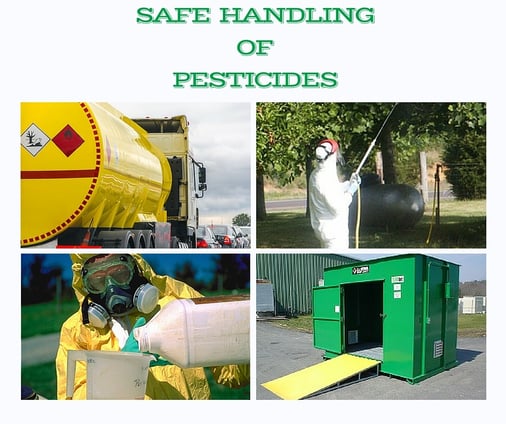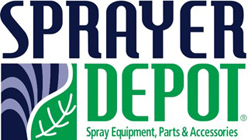Pesticides are widely used across the industries we serve. They offer protection against pests that  transmit diseases which can harm crops, plants, humans and pets. There are many different types of pesticides such as herbicides, fungicides, and insecticides. Each is quite effective at controlling pests when used appropriately.
transmit diseases which can harm crops, plants, humans and pets. There are many different types of pesticides such as herbicides, fungicides, and insecticides. Each is quite effective at controlling pests when used appropriately.
Handling pesticides safely can have a huge impact on the efficacy of your application. There are, however, risks involved when using any type of chemicals. The applicator responsible for spraying the solution must be properly trained on how to handle, transport, mix, apply, and store these chemicals.
The University of Georgia College of Agricultural & Environmental Sciences Cooperative Extension Service has made available a thorough guide on handling pesticides. At Sprayer Depot, we’ve done the homework for you. Read below for our quick recap on Safe Handling of Pesticides.
Transportation
- Chemicals should never be transported in the passenger compartment of a vehicle.
- Ensure chemicals are properly secured to prevent spillage.
- Never transport pesticides with other items that could become contaminated such as livestock or groceries.
- A “Hazardous Materials” placard and other labels should be clearly attached to commercial pesticide transporters.
Mixing and Loading
- Keep soap and fresh water handy in a designated spot before you start so you can quickly wash up if pesticide spills or splashes.
- Always read the label first and pay close attention to the warnings.
- Wear personal protective equipment as stated on the label before handling the pesticides.
- Mix concentrated pesticides below eye level preferably keeping the container below the waist.
- Ensure your back is to the wind to avoid any fumes or pesticides blowing on you.
- Always use a stir stick to stir chemicals.
- Pesticide should always be poured first into a different container to dilute it according to instructions before it’s added to the sprayer tank.
- Make sure the spray tank doesn’t overflow.
- Never mix more thank you need.
Application
- Always read the label and follow the instructions specified for the pesticide.
- Ensure you are wearing the required PPE.
- Use the correct spray equipment for the application.
- Nozzles, hose, valves, seals, and strainers should all be properly serviced and tested for leaks.
- The sprayer should be accurately calibrated.
- Monitor the weather and check wind direction to avoid spraying upwind from sensitive crops, homes or other areas.
- Use drift control spray tips.
- Always empty a tank by spraying the entire contents onto the vegetation or another area for which it was intended.
- Always store pesticides out of reach of children and pets.
- Never store pesticides near food, feed or seed.
- Store pesticides in their original containers with labels clearly visible.
- The building or room where pesticides are stored should be locked and only accessible by trained applicators.
- Never store diluted pesticides in sprayers.
- Store pesticides in a location away from freezing temperatures or extreme heat.
For more in-depth information on handling pesticides, please read the complete guide by clicking here. Share your tips on proper use of pesticides in the comment box below.

.png?width=280&name=SameDayShippingGuarantee-New%20(1).png)




